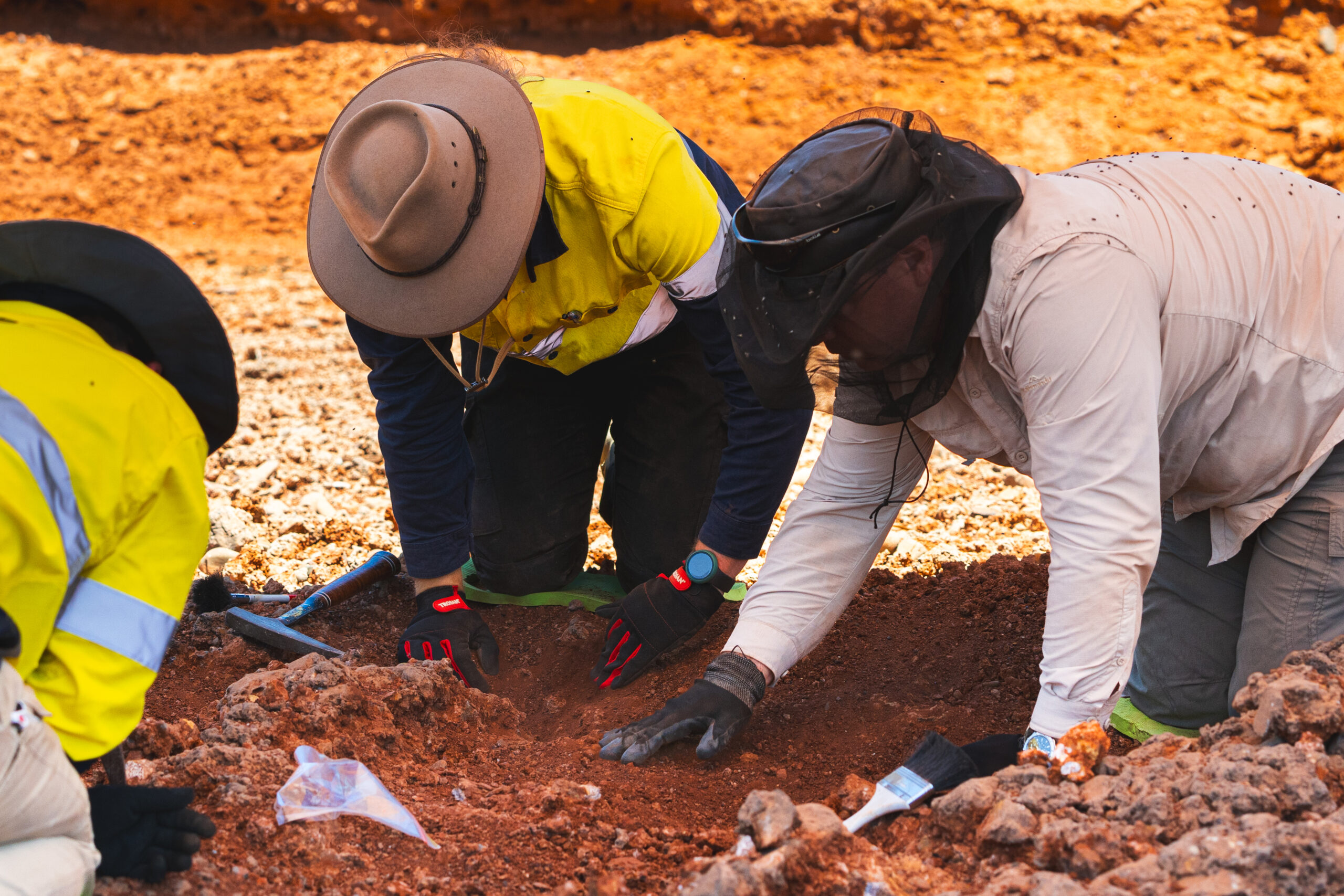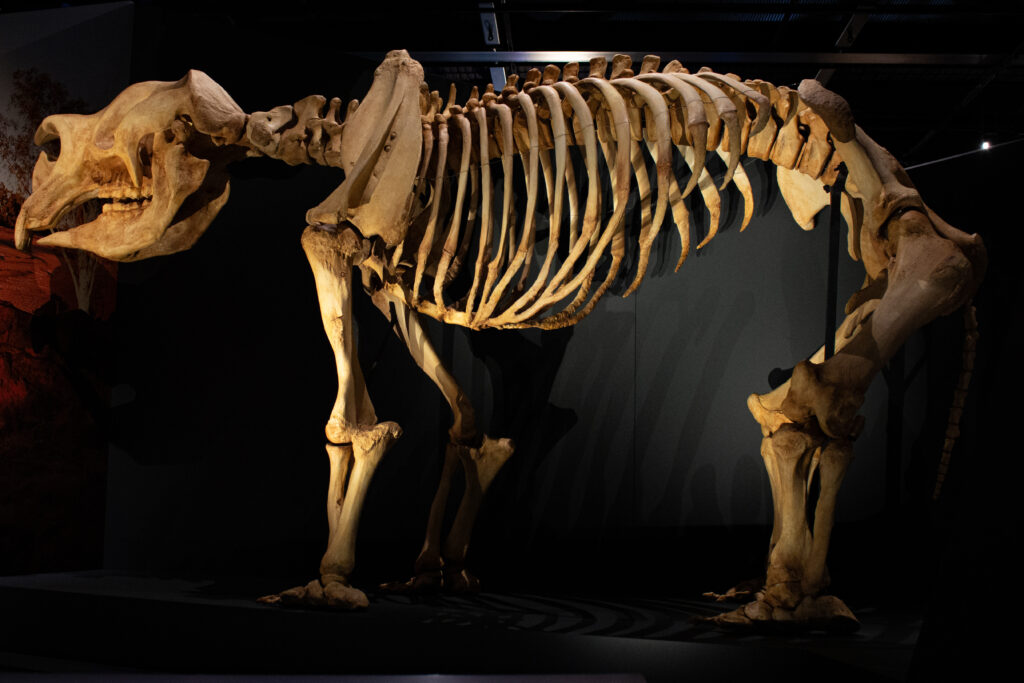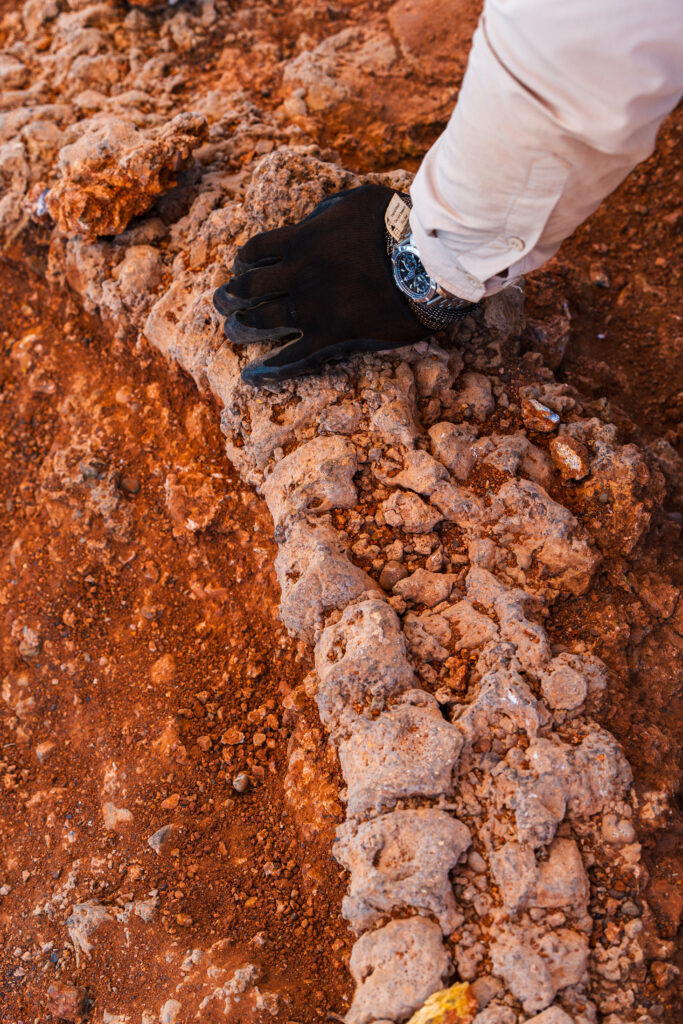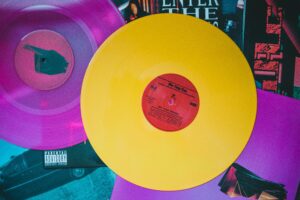Picture a giant wombat-like creature weighing about the same as a small truck.
That’s what a Diprotodon looked like.
Now imagine stumbling across not one but 10 Diprotodon fossils. That’s what happened to Dr Kenny Travouillon in Du Boulay Creek about 100km southwest of Karratha.
FANTASTIC (MEGA)BEASTS AND WHERE TO FIND THEM
For a while, Kenny had been wanting to go to the Pilbara to search for fossils.
Being a palaeontologist working for the WA Museum, he knew that a fossil was found in Du Boulay Creek back in 1991. In fact, the fossil is currently on display in the Western Australian Museum.
However, he struggled to obtain funding.
Luckily, Du Boulay Creek borders one of the sites managed by CITIC Pacific Mining, so it agreed to help Kenny out.
Kenny ventured to Du Boulay Creek for the first time in 2022 to see if the palaeontologists from 1991 had left anything behind.
NO EXPECTATIONS TURNED GREAT
He said he had “no expectations” on what he was going to find and thought there was going to be nothing there.
“We didn’t know we were gonna find it,” Kenny says.
“But you could walk around, and there were fossils everywhere.”
He returned in June this year to date the fossils and begin the excavation.
Eight of the 10 fossils found have now been excavated. However, the dig site is on a creek bed and can only be accessed during the dry season so the team will have to wait until next year to excavate the remaining two fossils.
But just as the dig team didn’t find everything in 1991, Kenny says that there is definitely a chance that more fossils could be found in Du Boulay Creek.
A BIT LIKE A JIGSAW PUZZLE
According to Kenny, when it comes to fossils, “most of the time you find a bit of skeleton here and a bit of skeleton there”.
“It’s a bit like a jigsaw puzzle,” he says.
In the case of the Diprotodon in Du Boulay Creek, the bone and rock are the same colour, making excavation quite difficult.
“In the process of recovering it, we do break quite a few of them but we are very good at fixing them down the track with lots of glue,” he laughs.
Can you believe it? Every fossil you’ve gawked at in a museum has been glued together.
WANNA HEAR MI-GRATE IDEA?
In the 10 fossils found in Du Boulay Creek, there was a mix of adult and baby skeletons, which were differentiated by their size.
Kenny suggests that this could indicate a major migration route for the Diprotodon.
“Just like in Africa where you get big mammals migrating every year … this could be the same thing here,” he says.
WE’RE REALLY DIGGING THIS FOSSIL FIND
The excavation team also found fossils of oysters, crab claws, snails and mangrove roots.
“When you put that in context with everything else, you can really understand what Australia was like hundreds of thousands of years ago,” says Kenny.
One of the Diprotodon fossils has been brought to Perth so scientists can begin to study how the species may have lived, what they ate and what their behaviour was like.
“Every time we find a fossil like this, it’s another piece of the puzzle to work out what happened in the past,” Kenny says.












